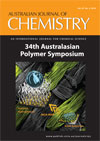
Australian Journal of Chemistry
Volume 67 Number 4 2014
RESEARCH FRONT: 34th Australasian Polymer Symposium
CH14163Polymer Science Goes to the Top: The 34th Australasian Polymer Symposium, Darwin
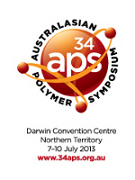
This introduction sets the background to this special issue containing papers collected from the 34th Australasian Polymer Symposium (34APS) which was held in Darwin, Northern Territory, from 7 to 10 July 2013. These works illustrate both the multidisciplinary nature and the breadth and depth of contemporary polymer science and engineering that was discussed at this meeting.
CH13573The Molecular Size Distribution of Glycogen and its Relevance to Diabetes
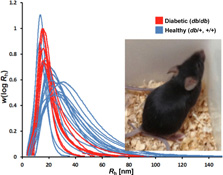
Glycogen is a complex branched glucose polymer which functions as a blood-sugar buffer in humans. The distribution of molecular sizes of this molecule is found to be quite different in diabetic and healthy mice. Exploring the polymer science underlying this observation gives hints as to possible new drug targets for diabetes.
CH13573 Abstract | CH13573 Full Text | CH13573PDF (644 KB) Open Access Article
CH13476Construction of Vinyl Polymer and Polyester or Polyamide Units in a Single Polymer Chain via Metal-catalyzed Simultaneous Chain- and Step-growth Radical Polymerization of Various Monomers
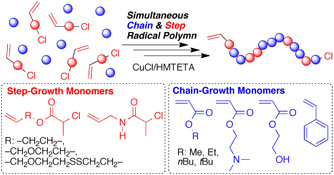
Metal-catalyzed simultaneous chain- and step-growth radical polymerization of various step- and chain-growth monomers leads to various random and multiblock copolymers consisting of both vinyl and condensation polymer units with additional functional groups in the main chain.
CH13450Graft Copolymers with Polyamide Backbones via Combination of Passerini Multicomponent Polymerization and Controlled Chain-growth Polymerization
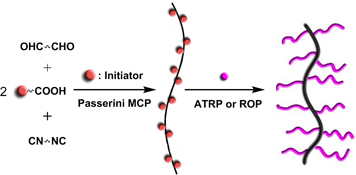
A combination of Passerini MCP and controlled chain-growth polymerization of vinyl monomers and lactones is an efficient method to synthesize graft copolymers with polyamides as the backbones.
CH13452Synthesis of a Novel Polyaniline Glycopolymer and its Lectin Binding Studies

The synthesis and polymerisation of a novel mannose-functionalised aniline monomer is reported. The binding ability of this polyaniline glycopolymer to mannose receptors, ConA, was tested. The carbohydrate moiety was delivered to aniline through a CuAAC reaction. Herein, we provide the first example of a carbohydrate covalently bound to polyaniline through click chemistry.
CH13526Photoinduced Bending Behaviour of Cross-linked Liquid Crystalline Polymers with High Cross-linking Densities

Highly cross-linked liquid crystalline polymer (CLCP) films with a long spacer and azobenzene chromophores (of varying concentrations and orientations) were prepared. The spacer, cross-linking density, and concentration and position of the azobenzene chromophores influenced the photoinduced bending behaviour of the films.
CH13527Bacterial Enzyme Responsive Polymersomes: A Closer Look at the Degradation Mechanism of PEG-block-PLA Vesicles
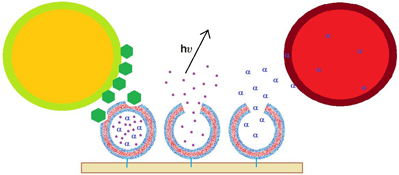
We report on the development and investigation of the release mechanism of stimuli-responsive polymeric vesicles that are selectively cleaved by enzymes released by bacteria for application in pathogen-sensing coatings for wound dressings. Polymersomes of amphiphilic PEG114-b-PLAx block copolymers comprise an indicator system for the enzyme proteinase K that is excreted by pathogenic bacterium Pseudomonas aeruginosa.

The phase behaviour of conjugated-polymer/fullerene mixtures used in organic solar cells plays an important role in determining the microstructure of the photo-active layer, which in turn impacts solar cell performance. This work uses atomistic molecular dynamics simulations to clarify the miscibility of the widely used conjugated polymer P3HT with common fullerenes.
CH13525Peptide-Based Star Polymers as Potential siRNA Carriers
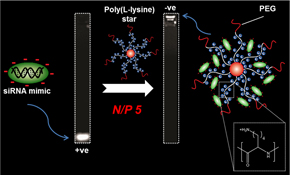
Star polymers were synthesised using poly(amido amine) dendrimers as multifunctional initiators for the ring-opening polymerisation of ϵ-Z-l-lysine N-carboxyanhydride, followed by acid de-protection to yield water-soluble cationic poly(l-lysine) stars. Post-functionalisation of the star polymers with poly(ethylene glycol) was performed. Quantitative complexation of the star polymers with oligodeoxynucleotides was achieved at a nitrogen-to-phosphate ratio of 5.
CH13519Tailoring Substrate Hydrophilicity Using Grafted Polypeptide Nanocoatings
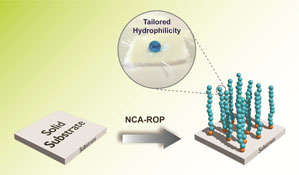
Polypeptide nanocoatings were fabricated via surface-initiated ring-opening polymerization of amino acid N-carboxyanhydrides (NCA) to tailor the surface-wetting properties of a range of organic and inorganic substrates. The nanocoating thickness, surface roughness, and wettability were tuned by controlling the polymerization time and the type of NCA derivative used (i.e. lysine or valine). Whereas poly(l-lysine) coatings are hydrophilic, poly(l-valine) coatings exhibit water-repellent properties.
CH13431Two NiII Complexes with Interesting Topologies Constructed from 5-Aminoisophthalic Acid with Rigid Bis(imidazole) Ligands
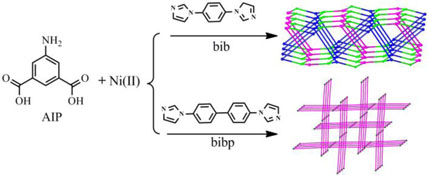
Two novel NiII complexes constructed from 5-aminoisophthalic acid and rigid bis(imidazole) ligands are reported. The two complexes display a 2D bilayer and 2D→3D inclined polycatenate frameworks, respectively. Their thermal properties were also studied.
CH13435Heterogeneous Photocatalytic Discoloration/Degradation of Rhodamine B with H2O2 and Spinel Copper Ferrite Magnetic Nanoparticles
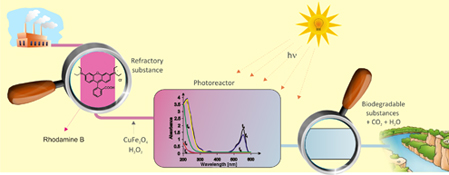
The photocatalytic discoloration/degradation of Rhodamine B (RhB) with UV/H2O2/CuFe2O4 was studied. A synergetic effect of the magnetic heterogeneous catalyst and UV light was observed. An optimum H2O2 concentration and catalyst dosage were needed for RhB discoloration/degradation.
CH13381Detection of Trace Amounts of Water in Organic Solvent by 8-Hydroxypyrene-1,3,6-Trisulfonic Acid Trisodium Salt
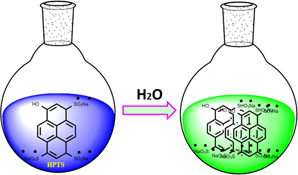
A colorimetric and fluorescent water sensor based on HPTS was developed. A significant colour change, i.e. blue to green, was observed on addition of water to polar organic solvent such as DMF, DMSO, EtOH, and MeOH.
CH13484A Sensitive Catalytic Wave Formed by Electrochemical Reduction of Morin in the Presence of an Oxidant KIO3
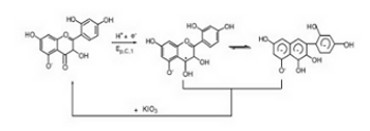
A novel sensitive catalytic wave for electroreduction of morin, a bioflavonoid compound possessing intriguing antioxidative and anticarcinogenic activities, was reported. The detailed mechanistic study can provide useful insights to the understanding of the antioxidation pharmacology of morin from a different perspective.
CH13483Oxyhalogen–Sulfur Chemistry: Kinetics and Mechanism of Oxidation of N-Acetyl-ʟ-methionine by Aqueous Iodine and Acidified Iodate

The biologically active compound N-acetyl-l-methionine is oxidized by oxyiodine species to the sulfoxide metabolite and no further. The sulfur centre is not oxidized to sulfate. The sulfoxide oxidation product is also biologically active.
CH13521Synthesis, Optical, and Antioxidant Studies of Anthraquinone-core-based Dendrimers with N-Phenylcarbazole as Surface Group
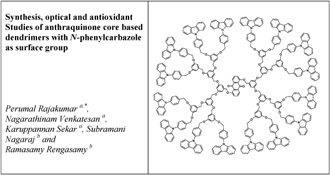
Synthesis of hyperbranched dendrimers up to third generation with N-phenylcarbazole as surface group and anthraquinone as the core unit has been achieved. The fluorescence decay studies of the dendrimers indicate that the highly branched third-generation dendrimer has a longer relaxation time than the zero-, first-, and second-generation dendrimers. Similarly, higher-generation dendrimers show better antioxidant behaviour with 1,1-diphenyl-2-picryl hydrazyl (DPPH) than the lower-generation dendrimers.
CH13593A Nano-Silver Enhancement Effect on the Luminescence of a Ligand–Eu3+ Complex via a SiO2 Spacer
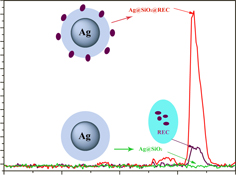
Luminescent rare earth complex (REC) nanocomposites, Eu(TTA)3Phen attached onto Ag@SiO2 nanoshells, were fabricated by wet chemistry and self-assembly techniques. The fluorescence of REC significantly improved with a silver core (size: 45 nm) and silica shell spacer (thickness: 20 nm). Thicker or thinner silica shells spacer compromised the metal-enhanced luminescence.
CH13571Isolation and Structure of a Hydrogen-bonded 2,2′:6′,2′′-Terpyridin-4′-one Acetic Acid Adduct
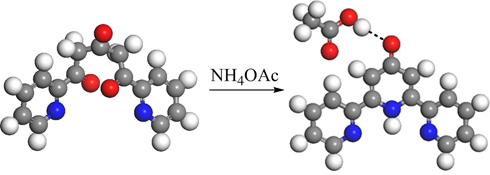
Terpyridin-4′-one has been isolated as a 1 : 1 hydrogen-bonded adduct with acetic acid, and not, as previously reported, as the acetate salt of a protonated pyridine nitrogen. The ketone oxygen of the more stable keto tautomer is the acceptor while the hydrogen-bond donor is the acidic hydrogen of the organic acid.
CH13448Preparation and Photocatalysis of Nano-Zn/Ce Composite Oxides
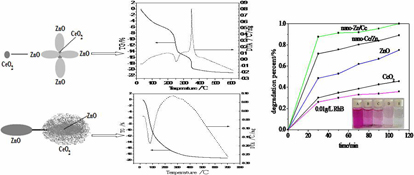
Using ascorbic acid as a new combustion agent, ZnO was rapidly synthesized by the combustion method. The combustion products are CO2 and H2O, which are non-toxic. The nano-Zn/Ce composite was prepared by a heterogeneous-precipitation method. Changing the sequence of precipitation produced different composites that showed different photocatalytic properties.
CH13595Synthesis and Phase Transfer of Monodisperse Iron Oxide (Fe3O4) Nanocubes
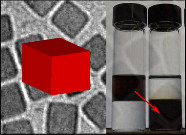
Magnetic nanocubes were synthesised by a new method and could be transferred from a non-polar to an aqueous dispersion. The cubes showed excellent colloidal stability and magnetic properties.
CH13511Modified N,O-Nucleosides: Design, Synthesis, and Anti-tumour Activity
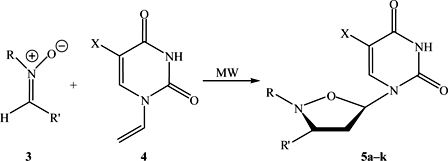
Modified N,O-nucleosides were prepared and tested for activity against several human cancer cell lines. N-benzyl groups, aromatic rings, and thymine were necessary for optimal activity.
CH13642Transition Metal-Free Synthesis of Pinacol Arylboronate: Regioselective Boronation of 1,3-Disubstituted Benzenes
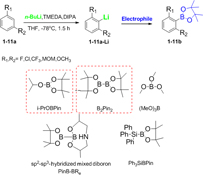
The regioselective synthesis of pinacol arylboronate has been achieved from 1,3-disubstituted benzene through directed ortho-metallation (DoM)–borylation sequence. Various 1,3-interrelated aromatic system and borylating reagents were investigated. In situ lithiation and subsequent boronation predominantly occurred at the ortho-position to afford the desired products in moderate yields.
CH12518Monoacetylation of Carbohydrate Diols via Transesterification with Ethyl Acetate
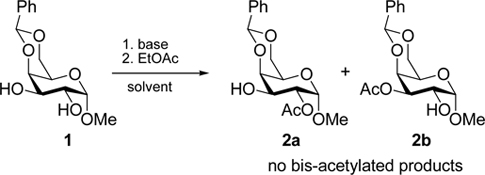
A simple and fast monoacetylation of secondary diols in protected monosaccharides with ethyl acetate and sodium tert-butoxide is described. With few exceptions, only monoacetylated products were observed with varying regioselectivity, depending on the substrate.


